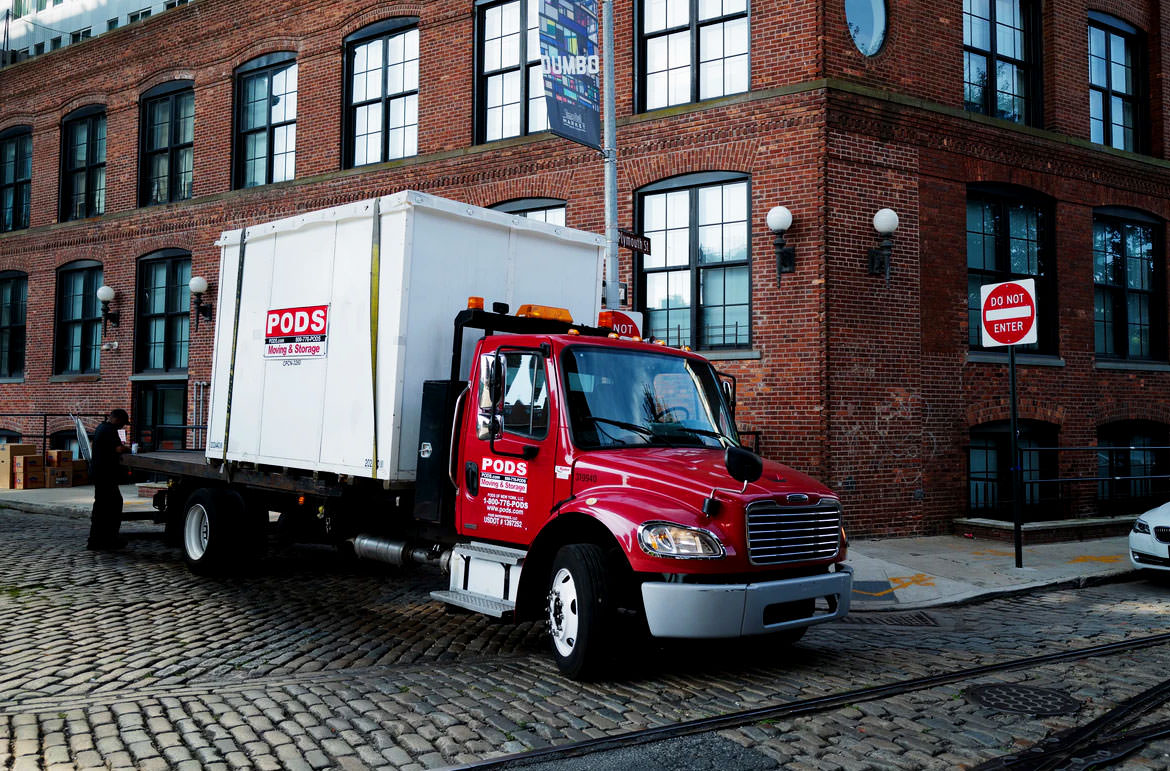
If you are starting to research granny flats, you are probably exploring every option. So, can you transport a granny flat?
Yes – transportable granny flats are becoming more common. Some are even manufactured at a factory, then delivered and installed on your property.
Today I will discuss the preparation needed for relocating a granny flat.
DON'T PAY A FORTUNE FOR YOUR GRANNY FLAT. Find out how to deal with council and build a granny flat for the lowest cost possible. Learn More.
I will also discuss things people don’t think about when transporting a granny flat – that is, things that could go wrong! And how to avoid them.
Relocating a Granny Flat – Preparation Required
- Council permits – Councils’ approval needs to gain obtained before any work can commence in preparation to the move.
Contact your local Council for more information about their requirements and approval process.
- Plans – Your plans and drawings are created to inform Council of the:
- Exact positioning of the dwelling
- Foundations
- Stump heights (if any), and
- Any extra elements that must be attached when the dwelling is in position.
It may help to enlist the help of a professional to provide you with drawings that will be accepted by Council.
- Plot the Route – The route the dwelling is to be transported on must be approved. The streets you intend to use must be safe for an oversized vehicle to navigate. Things such as trees, low powerlines and bridges must be considered. Traffic control may need to be organised for risky or busy roads. Present your plotted journey to the movers before your trip begins, or you may find yourself up for some extra charges.
What Approval is Required by Council?
Although relocatable buildings are different to traditional granny flats, they are still subject to your Councils’ regulations.
What is important to know about transportable dwellings is that:
- They CANNOT be approved by Complying Development (CDC), as
- They are not classified as “buildings”.
Unfortunately, not all Councils (particularly those in wealthier areas) allow transportable homes.
So, I suggest you contact your local Council about their regulations and approval process.
For example, in NSW, the only way to get approval is by a Section 68 Application through your local Council.
This is similar to the Development Application (DA) process, meaning approval may not be granted, as:
- Your neighbours will be advised and given the opportunity to object.
- Council may be against the design if they find it unsightly, or it does not fit in with the surrounding neighbourhood.
The positive news is that if you do gain Section 68 Approval:
- You won’t require a building permit.
- You won’t need a BASIX Certificate – as explained in a document by the NSW Department of Planning here.
They must also meet most of the same standards of the Building Code Australia, such as the requirements for:
- Sittings or foundations
- Drainage
- Sewerage.
A “temporary accommodation building” is:
- A relocatable building that has an appropriate sleeping compartment, even if not being used.
These buildings have a time limit, so Council:
- Can limit how long you can live in them (usually 6 months).
- Have the authority to enforce you to remove or demolish them after a certain period of time (generally 2 years).
To gain Council approval for your transportable granny flat to be a permanent, rather than temporary dwelling, it must be:
- Set up as a fixed structure, adhering to the normal regulations for a granny flat (including site works, footings, electrical and plumbing connections, etc).
What Needs to be Done on Your Land Before It Arrives
Once all plans, permits and the route have been approved, it’s time to prepare your land.
After you’ve chosen your transportable granny flat design, your chosen company should come out to:
- Prepare the foundations, footings, and connections (power, water and other utilities).
They should do this whilst manufacturing the granny flat in their factory. This overlap helps speed up the overall process. With your site prepared and ready, when your granny flat is delivered it can be installed immediately.
Cost of Transporting a Granny Flat
The cost of transport will vary depending on a range of factors, including:
- The size of your granny flat – The length, width, height, and weight will all factor into the type and size of truck required.
- The distance from the factory to your site location – Typically calculated by the number of kilometres.
- Ease of access at your site – Where your granny flat will be placed, and whether there is enough room for the truck to drive in.
So, obtain a quote from your chosen builder.
A rough estimate typically ranges anywhere from:
- $400 – $700 + GST in a Metro area, or
- $4 – $7 + GST per km outside of one.
Ensure your chosen company is only using professional transport and crane companies, who have:
- Experience in transporting portable buildings, and
- The right vehicles and equipment.
What Can be Done to Save on the Costs of Transportation
Consider the size of your granny flat. As mentioned, the length, width, height, and weight will all impact the cost.
For example:
- Shipping containers are easy to transport because trucks are designed around them.
- Flatpack (kit) homes are packaged in a way that reduces transport costs.
For some ideas, check out my post on cheaper granny flats under 50K.
However, just know that having a granny flat transported to your property can save you thousands in construction costs and time. It could even be the difference between having a granny flat or not having a granny flat.
Movable Granny Flats – Companies That Offer Them
See the companies below who sell transportable granny flats:
WA
- Fox Granny Flats – (08) 6001 6952
- Nylund House Transporters – (08) 9410 2047
- Cavalier Portables – (08) 9468 6724
- Modular WA – (08) 6454 0919
- Steve’s Transportables – 0419 955 259
- WestKey – (08) 9404 2733
- Hunter Transportable Buildings WA – 0400 646 201
- Factory Direct – (08) 9417 7355
- Ascention Assets – (08) 9267 2343
- InspiraBuild – 0418 905 971
- Australia Wide Transportables – (08) 9452 0464
VIC
- iBuild – 1800 679 268
- Anchor Homes – (03) 5145 7110
- Classic Cabins & Homes – 1300 120 110
- AgCab Portable Cabins – 1300 124 222
- Superior Granny Flats – (03) 9738 2279
- Elpor – (07) 9782 9894
- Portable Buildings by Design – 0419 389 833
- Willow Grove Homes & Granny Flats – (03) 9799 8500
- Snowgum Homes – (03) 9314 4162
- Bond Homes – (03) 5339 3845
NSW
- Nalla Portable Buildings – 1300 88 434
- Superior Portable Cabins – 0427 512 693
- VanHomes – 1300 558 512
- UniPlan – (02) 6773 8567
- Backyard Pods – 1800 289 763
- PanelUp – (02) 4200 4593
- Hunter Valley Homes – (02) 4028 0111
- Little Aussie Homes – 0414 189 776
- Parkwood Modular Buildings – (02) 4340 4077
- Mobile Granny Flats – 1300 799 812
- Scone Outdoors – (02) 6545 3033
- APC Relocatable Homes – (02) 4476 4008
- OSM Transportables – (02) 6881 6883
QLD
- Hoek Modular Homes – (07) 3889 7383
- PanelFab – (07) 3271 4422
- Granny Flats 4U – (07) 5645 3729
- Superior Granny Flats – 0419 540 393
- Elite Portables – 1300 818 164
- EastCoast Homes & Park Cabins – (07) 5598 1558
- Tiny Blox – 1300 997 763
- Build Diverse – (07) 3161 3559
- A&S Portables
- Direct Portable Buildings – 1300 156 667
- Peak Transportables – 1800 289 732
- Portable Buildings Brisbane – 0451 787 879
SA
- Adelaide Portable Buildings – 0402 031 736
- Allsteel Transportable Homes – (08) 8282 7373
- Selecta Homes – (08) 8256 6300
TAS
- Ridge Portable Solutions – 1300 933 035
- Timberworld – (03) 6369 5288
- TasKustomCabins – 0447 589 329
Is a Crane Required?
Again, the size of your granny flat will determine whether a crane is required. Prefabricated portable homes are many times just:
- Moved onto temporary draw bars with wheels and winched onto the transportation vehicle with the guidance of workers.

The cost of a crane can run into the $1,000’s
Though, at times they require the help of cranes. This is especially the case when unloading the vehicle at your site, and access is not easy. Under these circumstances, a larger crane will be required to unload your granny flat from a distance.
Be sure to get a few quotes as it can cost a lot for a crane and most operators in Australia charge $400+ per hour for large cranes.
What People Don’t Think About
Below is a list of unexpected things which could go wrong and are important to consider.
- BCA Compliance – When buying transportable homes, they’re usually sold as-is.
Meaning, the seller is not responsible for ensuring that they comply with Australian Standards. A common problem is that they are not BCA compliant – the internal wall height is less than 2.4m. This makes them illegal as a granny flat.
The majority of transportable homes available for purchase have cathedral (raked) ceilings. So, the ceiling is angled and the average internal wall height is under the minimum required BCA height. Be sure to check this before purchasing yours.
- Structural Engineering – Typically, transportable granny flats are a steel-framed structure.
The BCA requires all metal structures constructed in Australia to have;
- A Structural Compliance Certificate from a Civil Engineer, verifying it adheres to the BCA and other relevant Australian standards. Often, a buyer will purchase their structure online through an advertisement or auctions such as eBay. So, it may be second-hand or coming from overseas. And the seller does not have a certificate from a qualified Australian engineer.
Council cannot approve these structures without this certification, so ensure you get the appropriate paperwork.
- Transit Insurance – A major cause of dispute in this industry is that only some companies use professional transport.
Many use the cheapest transport possible, to save money. Many also do not give enough consideration to prevent damage, such as;
- Correct packaging, handling and lifting.
Leaving you left to deal with the damage and its’ associated costs. And insurance is vital in the transportation process!
Conclusion
I strongly suggest anyone who is thinking of purchasing a transportable granny flat contact their local Council first.
Also ensure you check the wall-heights before purchasing your dwelling.
If you are sure your structure will be approved, then do your preparation:
- Obtain your plans and permits
- Plot your route
- Prepare your foundations, footings, and connections.
Then, when your granny flat arrives, installation can begin immediately.












